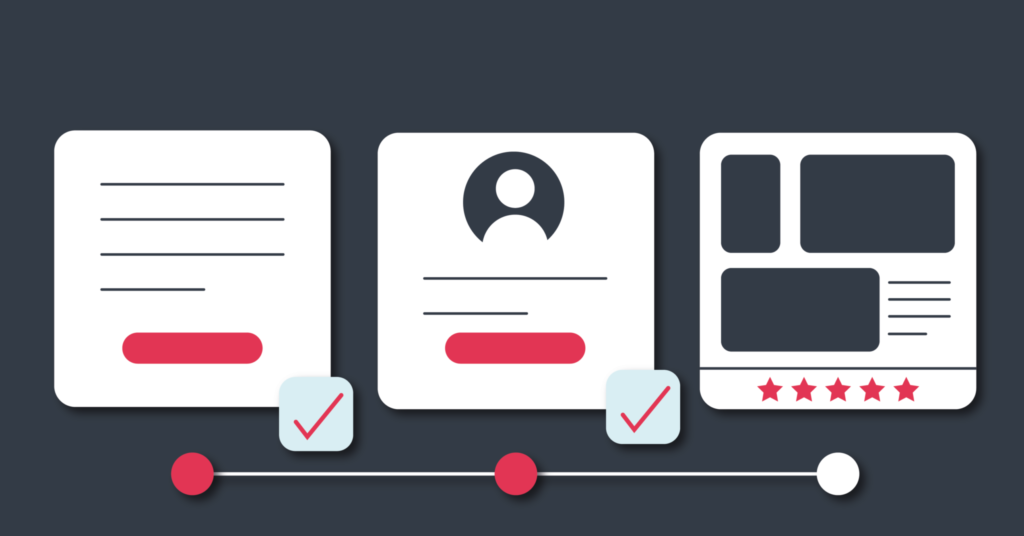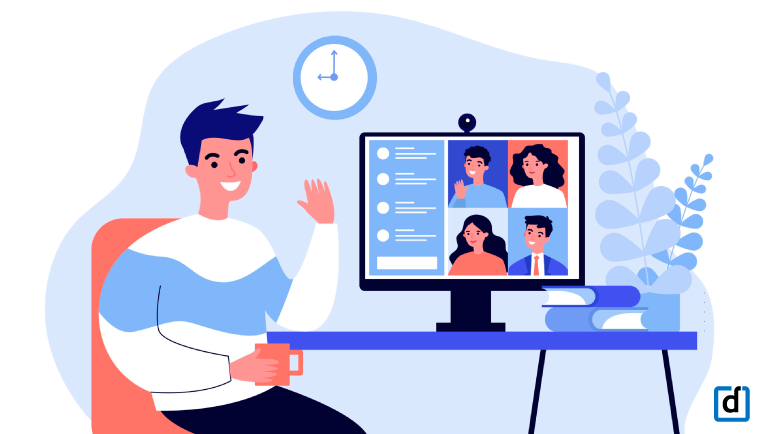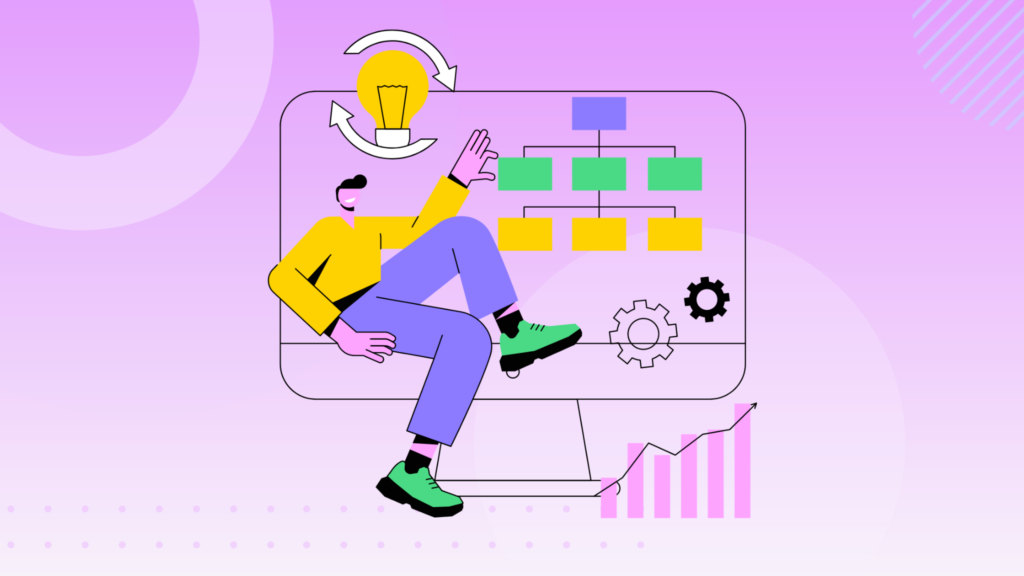In the ever-evolving world of business, the product-led era is upon us. This shift has necessitated a rethinking of traditional onboarding processes, paving the way for a more user-centric approach – self-serve onboarding.
This guide aims to provide an in-depth understanding of self-serve onboarding and how it fits into the modern product-led era.
Understanding the Product-Led Era
The product-led era signifies a shift from traditional business models that relied heavily on sales and marketing teams to drive growth. In contrast, the product-led approach places the product at the heart of the growth strategy.

Changes in customer behavior and expectations drive this paradigm shift. With easy access to information and many options, customers today prefer to try out products before making a purchase decision. They expect immediate value from the product and want the freedom to explore and learn at their own pace.
In this new era, the product becomes the primary driver of customer acquisition, conversion, and expansion. The focus is on providing value from the first interaction with the product, improving the user experience, and building products that users love and advocate for.
What is Self-Serve Onboarding?
Self-serve onboarding is a process that empowers new users to get started with a product on their own. Instead of relying on a sales or customer success team to guide them through the product, users have the resources and tools to navigate and learn about the product at their own pace.

This approach to onboarding is user-centric and focuses on creating intuitive, user-friendly products. It also involves providing resources such as tutorials, knowledge bases, and in-app guidance that support users in learning to use the product effectively.
The Importance of Self-Serve Onboarding
Self-serve onboarding is essential in the product-led era for several reasons:

- User Empowerment: By giving users control over their onboarding experience, they can explore and learn about the product at their own pace and on their terms. This can lead to a better understanding of the product and increased user satisfaction.
- Scalability: As your user base grows, providing one-on-one onboarding to every new user becomes challenging. Self-serve onboarding provides a scalable solution that ensures all users get the support they need to get started with the product.
- Reduced Time-to-Value: Traditional onboarding processes can be time-consuming and delay the time it takes for a user to find value in the product. Self-serve onboarding allows users to dive into the product immediately, reducing the time-to-value.
Key Components of Self-Serve Onboarding
Several key components make up an effective self-serve onboarding process:

1. Intuitive User Interface (UI): The UI should be simple and intuitive, making it easy for new users to navigate the product. A well-designed UI reduces friction and helps users get started quickly.
2. In-app Guidance: In-app guidance can take the form of tooltips, pop-ups, and walkthroughs that guide users through the product’s features and functionalities. This helps users understand how to use the product and provides immediate value.
3. Comprehensive Knowledge Base: A well-structured and easily accessible knowledge base can provide users with detailed information about the product. This includes how-to guides, FAQs, and videos that users can refer to whenever they need help.
4. Community Forums: Community forums create a space for users to interact with each other, share tips and tricks, and find solutions to common issues. It also fosters a sense of community among users.
Implementing Self-Serve Onboarding: A Step-by-Step Guide
Implementing self-serve onboarding requires careful planning and execution. Here is a step-by-step guide to help you get started:

- Understand your Users: Conduct user research to understand their needs, goals, and challenges. This will inform your onboarding strategy and help you create a product that meets their needs.
- Design an Intuitive UI: Design your product with the user in mind. The UI should be easy to navigate and intuitive, allowing users to quickly find what they want.
- Create In-app Guidance: Create tooltips, pop-ups, and walkthroughs that guide users through key features and functionalities. This should be contextually relevant and appear at the right time to provide maximum value.
- Develop a Comprehensive Knowledge Base: Create detailed guides, FAQs, and how-to videos that users can refer to when they need help. Make sure this is easily accessible.
- Foster a Community: Encourage users to share their experiences, ask questions, and help each other out. This can be done through community forums or social media groups.
Best Practices for Self-Serve Onboarding
Here are some best practices to consider when implementing self-serve onboarding:

- Keep it Simple: Avoid overwhelming users with too much information at once. Instead, features should be introduced gradually as users progress through the product.
- Personalize the Experience: Use data to personalize the onboarding experience, catering to individual user’s needs and interests. This could be based on their role, industry, or previous behavior.
- Provide Clear Instructions: Ensure users know what to do next. This could be through clear call-to-actions or step-by-step guides.
- Test and Iterate: Regularly test your onboarding process and make improvements based on user feedback and behavior. This ensures that your onboarding process continues to provide value as your product and users evolve.
Case Studies: Success Stories in Self-Serve Onboarding
Several companies have successfully implemented self serve onboarding and seen significant results:

1. Slack: Slack’s onboarding process is a great example of self-serve onboarding. They use a bot to guide new users through the platform, showing them how to set up their profile, start a conversation, and more. This interactive and engaging process helps users start quickly and understand the product’s value.
2. Dropbox: Dropbox uses a simple, step-by-step guide to get users started. They also provide a comprehensive help center with articles, guides, and forums for users who need additional support. This approach ensures that users can find the information they need to get the most out of the product.
The Future of Self-Serve Onboarding
As we move deeper into the product-led era, self serve onboarding will become more critical. With AI and machine learning advancements, we can expect to see more personalized and interactive onboarding experiences. These technologies can help understand user behavior better and provide tailored guidance to each user.

Furthermore, as products become more complex, there will be an increasing need for effective self serve onboarding to ensure users can get started quickly and easily.
In conclusion, self-serve onboarding is an effective strategy for empowering users, scaling customer onboarding, and reducing time-to-value in the product-led era. By understanding your users, designing intuitive interfaces, creating helpful resources, and continuously improving, you can create a successful self-serve onboarding process that drives user engagement and growth.
FAQs
1. How does self-serve onboarding differ from traditional onboarding methods?
Self-serve onboarding enables users to explore and get acquainted with a product or service independently, without direct assistance from customer support or sales teams. This contrasts traditional onboarding methods, often requiring scheduled training sessions or one-on-one guides.
2. Can self-serve onboarding truly replace human interaction?
While self-serve onboarding can significantly reduce the need for direct human interaction, it doesn’t entirely replace it. Situations may arise where users require personal assistance to solve complex issues or prefer human contact for reassurance and trust-building.
3. How do you measure the effectiveness of a self-serve onboarding process?
Effectiveness can be measured through user engagement metrics, such as time to first key action, feature adoption rates, and retention rates. User feedback and support ticket volumes can also provide insights into areas for improvement.
4. What are the main challenges in implementing self serve onboarding?
Key challenges include:
- Creating an intuitive and comprehensive onboarding experience that caters to diverse user needs and knowledge levels.
- Integrating effective in-app guidance without overwhelming users.
- Maintaining updated and relevant self-help resources.
5. How can AI and machine learning enhance self-serve onboarding?
AI and machine learning can personalize the onboarding experience by analyzing user behavior and preferences to provide tailored guidance, recommend relevant features, and predict and address common user questions or obstacles before they arise, leading to a smoother onboarding experience.
Ready to transform your onboarding process? Get started with OnboardSaaS today!
If you’re ready to empower your users and streamline your onboarding process, visit us at OnboardSaaS.
We specialize in providing top-tier self-serve onboarding solutions for SaaS companies. Our user-friendly platform and expert guidance will help you create a seamless and effective onboarding experience that accelerates time-to-value and boosts user engagement.
Ready to transform your onboarding process? Get started with OnboardSaaS today! Click here to schedule a demo or start your free trial.
We can’t wait to help you create an onboarding experience your users will love. Welcome to the future of onboarding with OnboardSaaS.
Conclusion
Self-serve onboarding emerges as a pivotal strategy for fostering user empowerment, streamlining customer integration, and enhancing product engagement in our advancing product-led era.
By prioritizing user autonomy through meticulously designed interfaces, interactive guidance, and comprehensive resources, businesses can facilitate a more efficient and engaging onboarding experience.
This approach accelerates the user’s time-to-value and significantly reduces the demand for direct support, allowing companies to scale efficiently. Integrating AI and machine learning promises even greater personalization and effectiveness in onboarding processes, meeting the diverse needs of users with unparalleled precision.
However, the transition to self-serve methods doesn’t negate the value of human interaction, which remains crucial for addressing complex queries and deepening trust.
The key lies in balancing automation with human touch, continuously iterating based on user feedback to refine the onboarding experience.
For more insights and to explore how your organization can benefit from implementing self-serve onboarding strategies, learn more about our comprehensive guides and resources.


I love how this blog celebrates diversity and inclusivity It’s a reminder that we are all unique and should embrace our differences